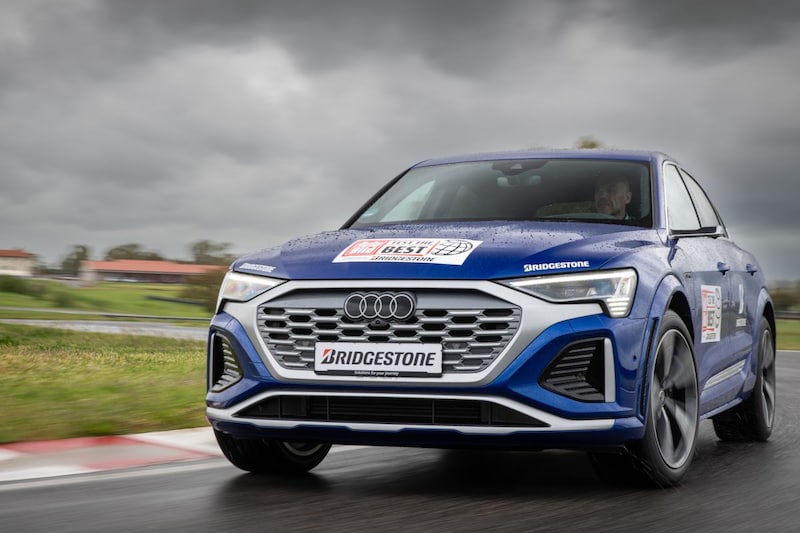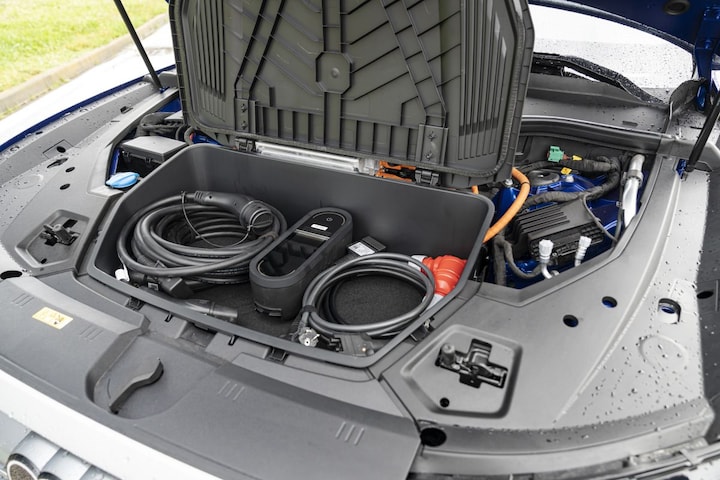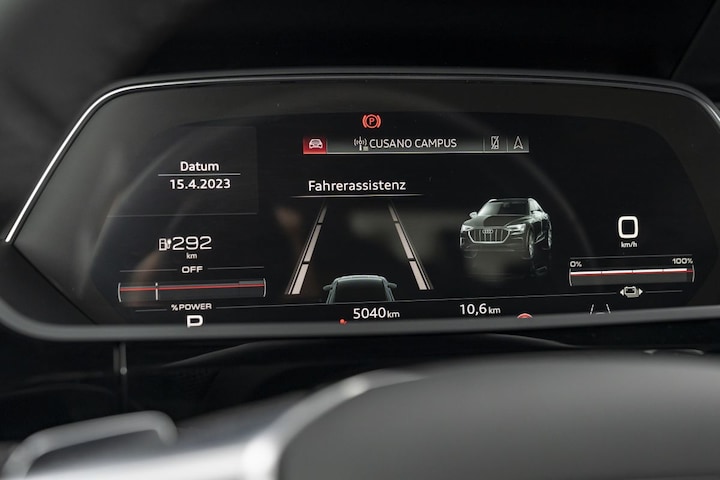Larger battery pack

The news seems bigger than it is: the Audi SQ8 e-tron Sportback is not an electrified version of the existing Q8, this is a facelifted E-Tron S Sportback. In this first test we tell you what’s new, but also explain how Audi’s naming for types currently works.
Huh, wasn’t the Audi SQ8 the second thickest version of the Q8?
Yes, and it still exists, because the SQ8 without the addition of e-tron remains in the price list. What’s up with that? Until recently, the name Q8 was reserved exclusively for the brand’s largest, tough SUV, the more adventurous stylized variant next to the large Q7. And the sportiest models were called SQ8 or RS Q8. They are still there, but Audi has decided to call the largest electric SUV that we knew as E-Tron and E-Tron Sportback (with sloping roofline) Q8 e-tron from now on. And while the top model of the electric car was first called E-tron S, with or without the addition of Sportback, Audi now calls it SQ8 e-tron, so in the case of the test car it is an SQ8 e-tron Sportback.

Audi SQ8 e-tron Sportback with stickers, because we drove it at the AutoBild Test the Best event.
Is the SQ8 e-tron Sportback as powerful as its namesake without the addition of e-tron?
Yes, you could see it as a kind of electric counterpart to that fat SUV with a combustion engine, nowadays a petrol-fired one, although you could also get the SQ8 with a fat TDI until 2020. With its power, the SQ8 e-tron can easily compete with the 507 hp SQ8 on petrol. Nothing changed in the power of the EV equipped with three electric motors during the facelift and name change. One of them is for the front axle and two operate the rear axle. In total they come out at 503 hp.

A small frunk in the front Audi SQ8 e-tron, there is one electric motor in the nose, there are two at the rear axle.
How fast is the Audi SQ8 e-tron Sportback then?
In 4.5 seconds it thunders from 0 to 100 km / h, although thunder may not be the right word. It hums with a powerful artificial sound to surprisingly high speeds on the short circuit where we test the SQ8 e-tron Sportback. It is of course mainly the 973 Nm of torque that make the 2,600 kilos feel like less, and the first braking action shows that the brakes also succeed quite well. The air suspension and the electronic stabilizers then very cleverly control the leaning, although you feel that a weighty piece of car is going through a corner much too fast.
What do you notice about the two electric motors on the rear axle?
The laws of nature can be defied to a certain extent, but if you then lift the accelerator pedal to get the nose in a bit more when going too fast through the corner, then a dollop of gas afterwards is sufficient to let the fast cornering action continue flawlessly. The 98 kW strong electric motor that controls the outer rear wheel then gives a little more power, the other equally powerful device that supplies the inner rear wheel with power knows that it has to give less and this creates torque vectoring. The electric motor on the front axle has an output of 124 kW. If all three come into full action, a boost even ensures that the power increases to 370 kW, which is more than the sum of the three powers added together.
The engines have remained the same, what has changed with the transformation from E-Tron S Sportback to SQ8 e-tron Sportback?
Nothing changes in its dynamic qualities, it is mainly in the improved efficiency. Because Audi has reduced the drag coefficient of the Q8 e-tron to a low value of 0.27 and even managed to reduce the drag coefficient of the Sportback to 0.24, the electric SUVs must be able to squeeze even more out of the amount of energy , but especially the larger battery pack does a lot of good for the range. Thanks to a battery with a capacity of 106 kWh and cells with a higher energy density, Audi specifies a range of 510 kilometers for the top version of the electric SUV. A considerable gain compared to the 370 kilometers that applied to the pre-facelift model.
The Sportback is more streamlined. How far does the ‘regular’ SQ8 e-tron get?
It saves 16 kilometers. The range for the SQ8 e-tron with the normal SUV looks is 494 kilometers with the same technology.
What is the consumption of the SQ8 e-tron Sportback according to the manufacturer’s specifications?
The average consumption is 26.4 kWh per 100 kilometers. Then of course you shouldn’t go crazy like we did during the short introduction on the Bridgestone tire test circuit during the European AutoBild Test the Best event, organized by our German partner. The acquaintance was short and mainly offered the opportunity to experience the dynamic qualities of the SQ8 Sportback e-tron.

Less than 300 kilometers of range, that’s what you get from pedaling on the circuit.
Surely such a thick EV with an S label runs fast?
Unfortunately, do not expect speeds from the SQ8 e-tron Sportback that will allow you to seriously compete with the big boys on the autobahn. As is possible with a Tesla Model X Long Range or Plaid. They run 250 and 262 km/h respectively and also accelerate faster than the SQ8 e-tron. An Audi SQ8 e-tron driver does pass a Q8 e-tron at top speed. It can go 10 km/h faster and is set at 210 km/h. That speed will be on the display in no time at the introduction on the Bridgestone test track in Italy.
Can the SQ8 e-tron charge faster than the E-Tron S?
If you want to blast through Germany quickly, it helps that you can now charge with 170 kW on the fast charger. That was 150 kW. Not a groundbreaking value, especially when you look at the charging speeds that Porsche and Tesla achieve.

Are there any external changes with the name change?
The appearance has also been updated. The improved aerodynamics are partly due to the changed front with a different logo, more smooth surfaces in the grille, a wheel spoiler at the rear axle and a different design of the wheels. The interventions are subtle but have their effect, the SQ8 Sportback looks fresher than the E-Tron S Sportback it was before the name change. From August, the sporty version is available as a normal SUV and as a Sportback.
.
– Thanks for information from Autoweek.nl